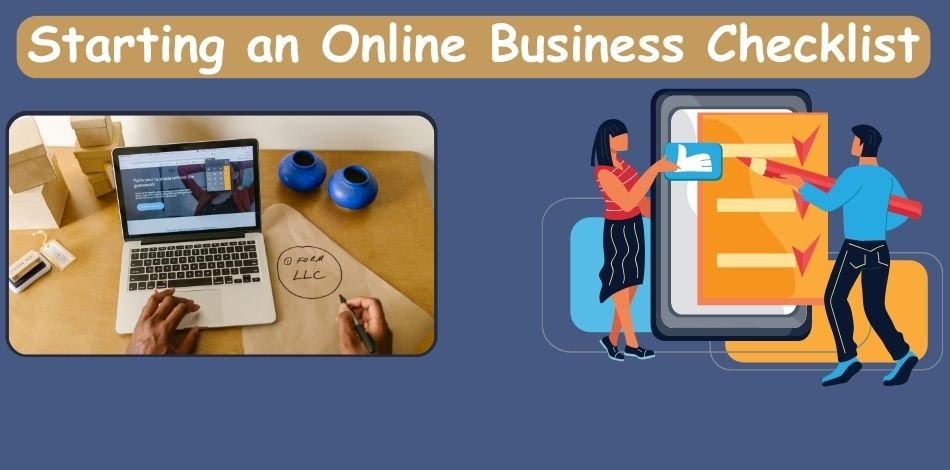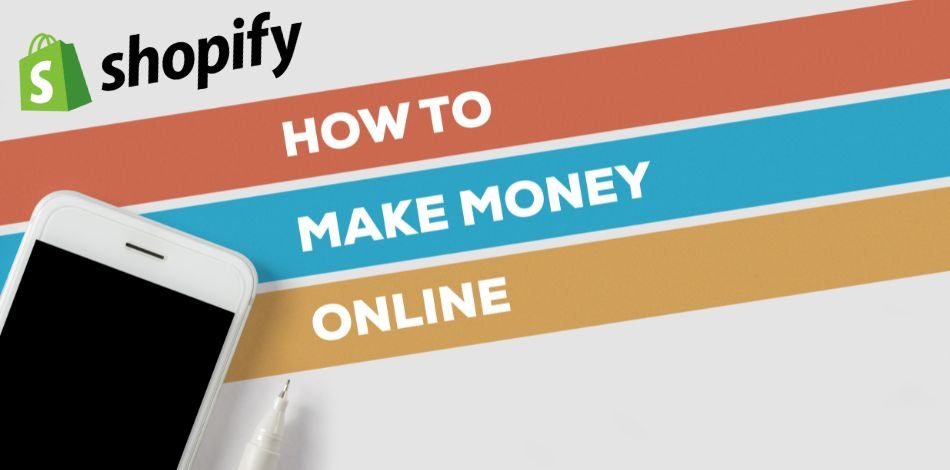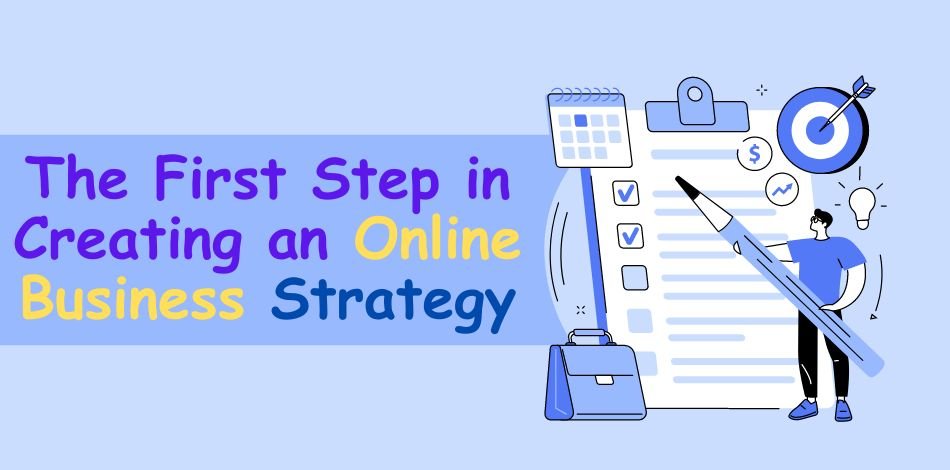Last Updated on July 16, 2025
The digital revolution has transformed how we consume, create, and monetize content. With the rise of remote work, e-learning, and global connectivity, more people than ever are turning to digital products as a flexible and profitable income source. Whether you’re a solo creator or an ambitious entrepreneur, understanding the appeal of digital goods is the first step in discovering profitable digital product ideas to sell online.
1. Low Startup and Maintenance Costs
Unlike physical goods, digital products don’t require inventory, manufacturing, or shipping logistics. Once created, they can be duplicated infinitely at virtually no cost. This allows entrepreneurs to scale faster while maintaining healthy profit margins.
2. Instant Delivery and Global Reach
With digital products, your customers receive their purchases instantly, which boosts satisfaction and reduces support inquiries. Additionally, your market isn’t limited by geography—your eBooks, courses, or graphics can be downloaded by someone across the world within seconds of purchase.
3. Evergreen Income Opportunities
One of the most appealing aspects of digital products is their passive income potential. After the initial investment of time and effort to create your product, it can continue generating revenue with minimal ongoing work. With the right marketing strategies—especially SEO, email marketing, and sales funnels—you can create a stream of income that lasts for years.
4. Environmentally Friendly and Sustainable
In a world increasingly concerned about environmental impact, digital products offer a sustainable alternative to traditional manufacturing. No physical materials, no waste, no shipping fuel—just clean, instant access to what your audience needs.
5. Flexibility in Formats and Niches
From eBooks and online courses to stock photos, software, templates, and audio clips—the digital product world is vast. You can tailor your offerings to your strengths, passions, and audience needs. With so many options available, you’re likely to find a format and niche that suits your expertise and lifestyle.
Top 8 Profitable Digital Product Ideas to Sell Online
Now that we’ve established why digital products are such a powerful business model, it’s time to dive into specific ideas. Below are eight of the most profitable digital product ideas to sell online, each offering unique monetization opportunities depending on your skills and target audience.
1. E-Books and Digital Guides
E-books are one of the easiest entry points into the digital product world. Whether you’re a skilled writer or a niche expert, creating a compelling e-book on a topic you’re passionate about can earn you consistent income. Popular topics include:
- Self-help and personal development
- Health, fitness, and wellness
- Niche hobbies like gardening, bird-watching, or journaling
- Technical guides like SEO strategies, coding basics, or financial planning
Platforms like Amazon Kindle Direct Publishing (KDP), Gumroad, and Payhip make it easy to publish and sell.
Pro Tip: Use well-designed covers and keyword-rich descriptions to boost visibility on platforms like Amazon.
2. Online Courses and Workshops
As the e-learning industry explodes, online courses have become one of the most lucrative digital products you can offer. You don’t need to be a university professor to teach something valuable. If you can explain a topic clearly, you can create:
- Pre-recorded video lessons
- PDF resources or workbooks
- Live Zoom sessions for premium engagement
- Mini-challenges or bootcamps
Whether it’s teaching photography, productivity, marketing, language learning, or even tarot card reading—there’s an audience for everything.
Best Platforms to Launch:
- Teachable
- Thinkific
- Udemy
- Kajabi
- Podia
3. Digital Art and Printables
For creative professionals, digital art is an excellent way to earn income passively. Think beyond just illustrations—you can also sell:
- Printable wall art
- Coloring books for kids or adults
- Digital planners or journals
- Wedding invitations or thank-you card templates
- Educational printables for teachers and parents
Platforms like Etsy and Creative Market are ideal for selling digital art. Once uploaded, your products can generate sales for years.
4. Stock Photography and Video
Photographers and videographers can license their work through stock platforms to generate recurring income. With content creators, bloggers, and businesses needing high-quality media, there’s a massive demand for:
- Lifestyle and business stock images
- Drone footage
- Background videos for YouTube
- Short clips for TikTok or Reels creators
Top Platforms:
- Adobe Stock
- Shutterstock
- iStock
- Pexels (paid premium versions)
The key is consistency and tagging content with relevant keywords to ensure discoverability.
5. Templates and Digital Tools
If you’re handy with design software or no-code tools, you can create and sell templates for:
- Resumes and CVs
- Social media posts (Instagram, Pinterest, LinkedIn)
- Website themes and page layouts
- Notion dashboards
- Budget spreadsheets or financial planners
Templates are especially appealing because they help buyers save time. Canva, for instance, has a booming marketplace for user-generated templates.
6. Software, Apps, and Plugins

For tech-savvy creators, developing software can yield massive profits. Whether you design a budgeting app, website plugin, or custom calculator, the possibilities are endless. Even a simple app that solves one small problem can turn into a recurring revenue stream—especially if paired with a subscription model.
Examples:
- WordPress plugins
- Shopify themes
- Chrome extensions
- Productivity or mindfulness mobile apps
7. Music, Loops, and Sound Effects
Audio content is essential for creators making YouTube videos, podcasts, and games. Musicians and sound designers can sell:
- Royalty-free music
- Loops and beats for producers
- Sound effects for video games or film
- Meditation and ambient tracks
Sell on:
- AudioJungle
- Pond5
- BeatStars
- SoundCloud (with premium licensing)
8. Membership Sites and Premium Content
Recurring income models like membership sites allow you to offer exclusive content on a subscription basis. This could include:
- Private video or podcast content
- Masterclasses and monthly challenges
- Expert interviews
- Downloadable templates or tools
You don’t need a huge following—just a small group of loyal subscribers who find real value in what you offer.
Recommended Platforms:
- Patreon
- Substack
- Ghost
- MemberPress for WordPress
How to Choose the Right Digital Product Idea for You
With so many profitable digital product ideas to sell online, it can feel overwhelming trying to decide where to begin. The good news? You don’t have to start big or perfect. The key is to align your digital product with your skills, your audience’s needs, and your long-term business goals.
Here’s a proven step-by-step process to help you make that decision wisely:
1. Identify Your Strengths and Passions
Ask yourself:
- What am I naturally good at?
- What topics do people come to me for advice on?
- What could I talk about or teach for hours without getting bored?
Your digital product should ideally sit at the intersection of your knowledge and your interest. Passion fuels consistency, which is crucial when you’re building a sustainable income stream.
2. Understand Your Target Audience
Before creating anything, know who you’re creating it for. Define your ideal customer:
- What are their pain points or challenges?
- What problems are they actively searching solutions for?
- What are their spending habits?
Use forums, Reddit, Quora, Facebook groups, and Google Trends to find trending conversations in your niche.
Example:
If your audience is moms looking for productivity tips, a digital planner or course on managing time with kids could be perfect.
3. Validate Your Idea with Market Research
Creating a product no one wants is a recipe for disappointment. Do basic market research:
- Search your idea on platforms like Etsy, Gumroad, or Udemy.
- Check how many similar products exist and how they’re performing (reviews, sales numbers, ratings).
- Use tools like Ubersuggest, Semrush, or Keywords Everywhere to check search volume and keyword demand.
If others are succeeding in that space, that’s a good sign there’s demand.
Hot Tip: Look for underserved micro-niches within a saturated category.
4. Choose a Format That Matches Your Skill Level
Different products require different production efforts. Choose what’s realistic for you now, and scale later.
| Skill | Suggested Digital Product |
|---|---|
| Writing | E-books, newsletters, guides |
| Teaching | Online courses, workshops |
| Design | Printables, templates, graphics |
| Tech/Dev | Apps, plugins, calculators |
| Music | Loops, sound effects, tracks |
If you’re new to tech or design, start with a simple PDF guide or eBook before progressing to apps or interactive tools.
5. Assess Monetization Potential
Not all digital products are equally profitable. Evaluate:
- Price potential – How much can you charge?
- Volume potential – How big is the market?
- Recurring revenue – Can it be sold on a subscription?
- Cross-selling opportunity – Can you offer bundles or upsells?
A $9 planner may require thousands of sales, but a $197 course might need just a few.
6. Factor in Production Time and Tools
Your idea should match your availability and tools. For example:
- Do you have a good microphone and screen recorder? (Courses, tutorials)
- Are you comfortable with Canva or Photoshop? (Templates, graphics)
- Do you have writing skills and grammar tools? (eBooks, guides)
Many platforms like Canva, Notion, and Descript make it easier to create high-quality products, even for beginners.
7. Start with a Minimum Viable Product (MVP)
Don’t overcomplicate your first launch. Test the waters with a smaller, simpler version of your idea:
- Write a short eBook before a full course.
- Launch one template bundle before a full shop.
- Create a single lesson before a full curriculum.
Gather feedback, improve, then scale.
How to Create and Package Your Digital Product Professionally
Once you’ve chosen the right idea, it’s time to turn that concept into a polished, market-ready product. Creating and packaging your digital product the right way is key to building credibility, increasing perceived value, and boosting sales. Whether you’re crafting a course, writing an eBook, or designing templates, professional presentation can set your offering apart.
Let’s break it down step by step:
1. Plan Your Content Thoroughly
Start by outlining your product content. A clear structure ensures a smooth user experience and enhances learning or usability.
For eBooks and Guides:
- Title page, table of contents
- Clear chapters with headings and subheadings
- Actionable insights or checklists
- Visually appealing formatting
For Courses:
- Course outline with modules and lessons
- Learning outcomes per section
- Supporting materials (quizzes, workbooks, assignments)
For Templates or Tools:
- Clean layouts, editable fields
- Demo or instruction guide
- Organized folders for delivery
Planning helps avoid overwhelm during the creation phase and minimizes edits later.
2. Use Professional Tools and Platforms
Your tools will vary depending on the type of product you’re creating, but quality software can significantly enhance the end result.
Recommended Tools by Product Type:
| Product Type | Recommended Tools |
|---|---|
| E-books | Google Docs, Canva, Adobe InDesign |
| Courses | Teachable, Thinkific, Loom, Descript |
| Templates | Canva, Figma, Notion, PowerPoint |
| Audio | Audacity, GarageBand, Adobe Audition |
| Software | Bubble, Glide, Webflow (no-code) |
| Graphics | Adobe Illustrator, Procreate, Affinity Designer |
Even free tools like Canva can produce stunning outputs when used well.
3. Create Visually Appealing Branding and Packaging
Your digital product’s appearance is your first impression. Professional packaging builds trust and influences perceived value.
- Cover Design: Create an eye-catching, high-resolution cover for your eBook, planner, or product bundle.
- Mockups: Use tools like Smartmockups to show how your product looks in use (e.g., on devices).
- Consistent Branding: Match fonts, colors, and visuals with your brand identity across all materials.
- Product Thumbnails: Especially useful for platforms like Etsy or Gumroad where visuals drive conversions.
Investing in design—even if it’s via free templates—can significantly boost sales.
4. Protect Your Digital Content
Once your product is ready, take steps to protect it from unauthorized use:
- Convert text documents to PDF
- Use watermarks or password-protection where necessary
- Include license agreements or usage guidelines
- Deliver products via secure links or gated platforms (e.g., SendOwl, Gumroad, or Podia)
You can’t completely prevent piracy, but you can deter casual misuse while focusing on building trust with genuine customers.
5. Test for Quality and Usability
Before launching, always test:
- Do all download links work?
- Are the files compatible across devices?
- Is your content easy to read, navigate, and apply?
- Are audio levels balanced? Are graphics crisp?
- Is your course platform user-friendly?
Ask friends, peers, or early-access customers for feedback. A small test group can help uncover mistakes you may have missed.
6. Add Bonuses or Upsells
Increase the perceived value of your digital product by bundling or offering add-ons:
- Printable worksheets with an eBook
- Private community access with a course
- Bonus templates or swipe files
- A discount on your next product
Upsells and bonuses not only improve your revenue per customer but also increase satisfaction and brand loyalty.
Best Platforms and Strategies to Sell Your Digital Products Online
Creating a high-quality digital product is just the beginning. To truly profit, you must market and sell your product using smart, tested strategies on the right platforms. With a combination of effective channels, compelling messaging, and optimized content, you can get your product in front of the right audience and drive consistent sales.
Let’s walk through where to sell and how to promote your digital offerings:
1. Choose the Right Selling Platforms
The platform you choose will depend on your product type, target audience, and pricing strategy. Below are some of the best places to sell profitable digital product ideas to sell online:
a. Marketplaces
These are perfect for reaching an existing audience quickly.
- Etsy – Best for templates, planners, and digital art.
- Creative Market – Ideal for design assets and creative tools.
- Amazon KDP – Great for eBooks and self-publishing.
- Udemy – Perfect for structured courses targeting broad audiences.
Pros: Built-in traffic, trusted brand names
Cons: High competition, platform fees, limited control
b. Your Own Website
Selling through your own site gives you full control and higher profit margins.
- Shopify – Best for a full e-commerce store
- Podia / Kajabi – Great for courses and memberships
- WordPress + WooCommerce – Ideal for flexibility and SEO control
Pro Tip: Integrate email marketing tools (like ConvertKit or MailerLite) to build a list and automate follow-ups.
c. Direct Sales Platforms
These streamline the selling process without needing a full website.
- Gumroad
- Sellfy
- Payhip
- SendOwl
These tools handle checkout, delivery, and even basic marketing, making them beginner-friendly.
2. Build a High-Converting Sales Page
A compelling sales page can dramatically increase conversions. Whether on your website or a marketplace, make sure your product page includes:
- A benefit-driven headline
- High-quality images and mockups
- A short demo or preview (video or screenshots)
- Key features and benefits in bullet form
- Testimonials or user reviews
- Clear call-to-action buttons
Bonus Tip: Use urgency (limited-time offers, countdowns) and social proof (recent purchases, reviews) to increase conversion rates.
3. Drive Traffic with Smart Marketing Strategies
You can’t sell what people can’t find. Use these proven methods to drive traffic to your product pages:
a. SEO (Search Engine Optimization)
Optimize your product titles, descriptions, and blog content with keywords like “profitable digital product ideas to sell online,” so they rank on Google.
- Use tools like Ubersuggest or Ahrefs to find relevant keywords
- Create blog content around your product topic
- Add alt-text to product images
b. Email Marketing
Email lists are gold. Offer a freebie (like a mini guide or printable) to grow your list, and promote your digital product through nurturing sequences.
Example Sequence:
- Welcome email
- Value-packed tips related to your product
- Introduce your digital product
- Offer a limited-time discount
c. Social Media Marketing
Leverage platforms like Instagram, TikTok, Pinterest, and LinkedIn depending on your niche. Share behind-the-scenes, tutorials, or client success stories.
d. Influencer or Affiliate Marketing
Let others promote your product for a commission. Tools like Gumroad and Podia allow for affiliate program setup.
4. Price for Profit
Test and tweak your pricing strategy:
- Tiered pricing – Offer basic, pro, and premium packages
- Bundling – Group related products at a discounted rate
- Limited-time offers – Create urgency with flash sales or seasonal discounts
Regularly review competitor pricing and gather customer feedback to adjust accordingly.
5. Provide Great Customer Experience
Even though it’s digital, support and trust still matter:
- Offer clear instructions and FAQ pages
- Respond quickly to questions or issues
- Offer refunds or satisfaction guarantees (if applicable)
- Ask for reviews and testimonials after purchase
Good experiences lead to referrals and repeat customers.
Long-Term Strategy and Final Thoughts
You’ve explored the why, what, and how of building a successful digital product business. Now it’s time to shift your mindset from “launch mode” to “growth mode.” The real magic of digital products lies in their scalability and long-term earning potential—if you’re strategic and consistent.
1. Focus on Continuous Improvement
No product is perfect at launch. Use customer feedback, analytics, and reviews to refine:
- Improve the design or layout
- Add bonus features or updated content
- Fix bugs or technical issues (especially for apps/tools)
Offer free updates when possible—it builds trust and keeps your audience engaged.
2. Expand Your Product Ecosystem
Don’t stop at just one product. As your audience grows, so should your offerings:
- Turn an eBook into a course
- Bundle printables into a subscription
- Create a membership community for loyal buyers
- Offer 1:1 consulting or coaching as a premium service
When your products complement each other, you increase customer lifetime value without increasing acquisition costs.
3. Build Your Brand Authority
Your brand isn’t just your logo—it’s your story, consistency, and credibility.
- Maintain a professional website or portfolio
- Stay active on relevant social platforms
- Start a podcast, YouTube channel, or blog to share insights
- Be featured on industry podcasts or collaborate with creators in your niche
Establishing yourself as a trusted voice means people are more likely to buy from you—even at premium prices.
4. Automate and Delegate
Once your business begins generating regular income, focus on automation:
- Use email sequences to nurture leads and upsell
- Schedule content with social media tools (e.g., Buffer, Later)
- Hire freelancers for tasks like editing, customer support, or design
Automation gives you time back to focus on innovation, not just operations.
5. Stay Updated on Trends and Tools
The digital space evolves quickly. Stay ahead by:
- Subscribing to newsletters in your niche
- Taking new courses to upgrade your skills
- Exploring emerging platforms (like AI tools or Web3 content creation)
- Attending webinars or online summits
Keeping your skills sharp ensures you always have profitable digital product ideas to sell online as market demands shift.
Conclusion: Turning Passion into Profit
Building a digital product business isn’t about overnight success—it’s about creating lasting value, one offer at a time. Whether you start with a simple eBook, an in-depth course, or a beautifully crafted template, every product becomes a stepping stone toward freedom, impact, and income.
By following this guide and focusing on profitable digital product ideas to sell online, you’re not only tapping into a booming industry—you’re investing in yourself and your future. Keep learning, keep creating, and remember: the digital world rewards action.
Frequently Asked Questions (FAQs)
Why are digital products gaining popularity?
In our hyper-connected era, digital products stand out for their ease of access, instant delivery, and reduced overhead costs. Unlike physical products, they don’t require inventory space, shipping, or production after the initial creation. Their eco-friendly nature, bypassing traditional packaging and transportation, further endears them to environmentally-conscious consumers. With global reach, sellers can cater to an audience from anywhere, anytime.
How do e-books differ from traditional books in profitability?
E-books offer a distinct advantage when it comes to profitability. Traditional publishing involves various intermediaries like publishers, distributors, and retailers, each taking a share of the profits. With e-books, especially when self-published, authors can retain a more significant portion of the sales revenue. Additionally, e-books eliminate printing, warehousing, and shipping costs, allowing for higher profit margins per sale.
Is there a market for online courses if I’m not an ‘expert’?
Absolutely! The beauty of the online learning community is its thirst for diverse knowledge. While expertise in a field adds credibility, there’s a market for genuine experiences, unique perspectives, and niche skills. Authenticity is key. If you’re passionate about a topic and can offer valuable insights or a fresh approach, there’s likely an audience eager to learn from you, regardless of traditional credentials.
How do I ensure my digital art products stand out in the market?
The digital art market is undoubtedly competitive, but uniqueness always finds a way to shine. Focus on developing a distinct style or catering to niche audiences. Market research can help identify gaps in offerings. Additionally, engaging with your audience through social media or community platforms helps gather direct feedback, allowing for continuous refinement. Remember, consistent branding, customer testimonials, and leveraging SEO can significantly impact visibility.
How do I price my digital products?
Pricing is a blend of art and science. Start by evaluating your production costs, including time, tools, and platform fees. Research competitor pricing, but consider the unique value your product offers. Factor in your target audience’s purchasing power. A tiered pricing model or promotional offers can be effective for some products. Regularly review and adjust pricing based on sales data, feedback, and market dynamics. Remember, value perception plays a crucial role in digital product pricing.









